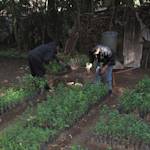The Willows Of Swissvale
Personal memory by Kirk Savage
1880 • Pittsburgh, PA
In 1842 an extraordinary woman named Jane Gray Swisshelm moved into her husband's family homestead in the Nine Mile Run stream valley just outside Pittsburgh, which she dubbed “Swissvale.” She was an ardent reformer, an antislavery and women's rights activist, and a brilliant writer, but also a passionate nature lover. Nine Mile Run emptied into the Monongahela River, and its valley was known into the 20th century for its beautiful meadows and wooded shale slopes. Jane loved the woods and with her “little grubbing-hoe transplanted many wild and beautiful things.” One of them was a willow tree. Her mother-in-law, who disapproved of her, had the tree cut down but Jane retaliated by planting even more, so that by 1880, when she published her memoir, Swissvale was locally famous for its “magnificent willows.”
When I moved, in 1993, into a house up on the very edge of the Nine Mile Run valley, there was an ancient willow, blasted by lightning, in our back alley; I liked to think that it was one of Jane Gray Swisshelm’s. But by then, of course, the willows were mostly long gone. In the 1920s the lower half of Nine Mile Run became a slag dump for the Homestead steel mill, and in the 1950s a huge elevated “parkway” was run through the middle of the valley. A freeway interchange now stands where the Swissvale homestead used to be. The story, however, took an unexpected turn in the late 1990s when a group of artists from CMU became interested in the valley. Their efforts eventually led to the largest federally funded urban stream restoration in the U.S. and the creation of an innovative community steward, the Nine Mile Run Watershed Association. Various plant and animal species are now returning to the stream and its valley.


Learn about Maya Lin’s fifth and final memorial: a multi-platform science based artwork that presents an ecological history of our world - past, present, and future.

Discover ecological histories and stories of former abundance, loss, and recovery on the map of memory.

Learn how we can reduce our emissions and protect and restore species and habitats – around the world.

See how art can help us rethink the problems we face, and give us hope that each one of us can make a difference.

Help make a global memorial something personal and close to home. Share your stories of the natural world.


